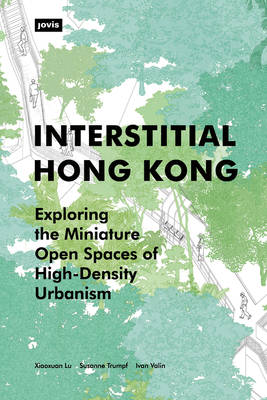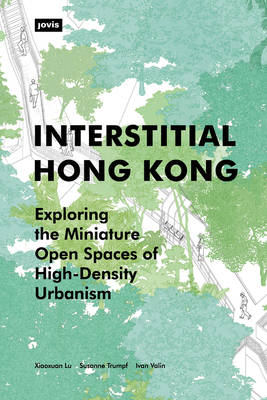
- Afhalen na 1 uur in een winkel met voorraad
- Gratis thuislevering in België vanaf € 30
- Ruim aanbod met 7 miljoen producten
- Afhalen na 1 uur in een winkel met voorraad
- Gratis thuislevering in België vanaf € 30
- Ruim aanbod met 7 miljoen producten
Zoeken
Interstitial Hong Kong
Exploring the Miniature Open Spaces of High-Density Urbanism
Xiaoxuan Lu, Susanne Trumpf, Ivan Valin
Paperback | Engels
€ 52,95
+ 105 punten
Omschrijving
Enmeshed in Hong Kong's densely woven urban fabric, wedged between its towering mixed-use complexes and perched along its steep hillsides, sits a network of more than 500 miniature public parks comprising the smallest unit of the city's public open space network. Though plentiful, these so-called Sitting-out Areas - referred to locally as (literally: a "three-cornered shit pit") - have never been considered in terms of the collective resource they have the potential to be.
This book presents a series of critical essays revealing the city's Sitting-out Areas in relation to Hong Kong's planning histories and shifting terrains, while also tracking how these spatial fragments have been shaped by concepts of publicness, accessibility and regulation. The second half of the book presents 44 richly illustrated case studies revealing the variety and idiosyncrasies of Hong Kong's smallest open spaces. Ultimately, the book argues that we can understand the high-density city not only through its buildings, but through the character and potency of its interstitial landscapes.
This book presents a series of critical essays revealing the city's Sitting-out Areas in relation to Hong Kong's planning histories and shifting terrains, while also tracking how these spatial fragments have been shaped by concepts of publicness, accessibility and regulation. The second half of the book presents 44 richly illustrated case studies revealing the variety and idiosyncrasies of Hong Kong's smallest open spaces. Ultimately, the book argues that we can understand the high-density city not only through its buildings, but through the character and potency of its interstitial landscapes.
Specificaties
Betrokkenen
- Auteur(s):
- Uitgeverij:
Inhoud
- Aantal bladzijden:
- 320
- Taal:
- Engels
Eigenschappen
- Productcode (EAN):
- 9783868596892
- Verschijningsdatum:
- 31/05/2021
- Uitvoering:
- Paperback
- Formaat:
- Trade paperback (VS)
- Afmetingen:
- 146 mm x 212 mm
- Gewicht:
- 680 g

Alleen bij Standaard Boekhandel
+ 105 punten op je klantenkaart van Standaard Boekhandel
Beoordelingen
We publiceren alleen reviews die voldoen aan de voorwaarden voor reviews. Bekijk onze voorwaarden voor reviews.








